Pandemic's Paradox
Illustrations by Dan Page
We asked a dynamic group of faculty and staff, each with different perspectives on academic and student life, to answer two questions: How do you think the pandemic changed the nature of your work, profession or the things that matter to you? Which of these changes will — or should — stick around in a post-pandemic future?
In response, we received a glimpse into a year that “shocked our understanding of almost every aspect of our lives,” as Baker College magisters Luis and Angela Duno-Gottberg said. “It was a year of running elementary schools out of our homes, of missing research opportunities and of mastering new technologies that enabled essential work to go on.” It was a year of keeping up with constantly changing visa rules for international students, of attending conferences and lectures worldwide without traveling, of experiencing professional life in ways that were both closer and more distant. In this paradoxical pandemic year, there was one constant: The value of presence was brought into sharp relief.
Rallying the Public
As director of health and human services for Dallas County, Texas, Philip Huang has won praise for his steady leadership during the COVID-19 pandemic.
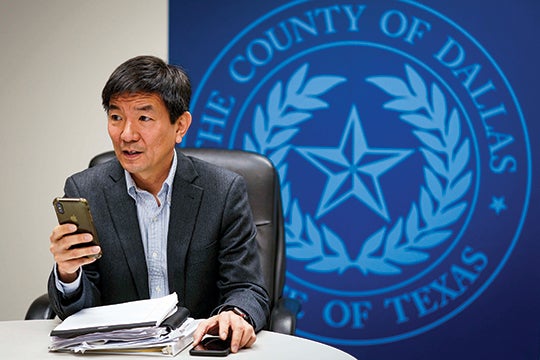
After graduating from Rice with a degree in civil engineering, Philip Huang ’82 earned an M.D. from the University of Texas Southwestern Medical School and a Master of Public Health from Harvard University. Huang worked for two years as an Epidemic Intelligence Service (EIS) officer for the Centers for Disease Control and Prevention (CDC), followed by stints with the Texas Department of Health and Human Services and as medical director and health authority for the city of Austin, before moving to Dallas, in 2019, to head up the Dallas County Health and Human Services Department.
When did you first become worried about COVID-19?
We started hearing about it in December 2019. I was having conversations with other health department directors, and we were all trying to figure out what was going on and what the impact was going to be. Dallas County Judge Clay Jenkins is the head of emergency response, so we were working very closely with him. We were the first county in Texas to issue a stay-at-home order, March 12, 2020, which was shortly after our first case.
How did your experience working for the CDC’s EIS help prepare you for the pandemic?
The CDC EIS program is the most respected training for front-line epidemiology (“shoe-leather” epidemiology). It also connected me to a premier network of epidemiologists, both at the CDC and at public health departments around the country. Tom Frieden, who went on to become the CDC director, was actually in my class of EIS officers. That network was invaluable during the pandemic when it came to communicating and sharing resources with other health departments.
How did you approach communications in those early days?
I tried to be as transparent as possible and tell what we knew, what we didn’t know and what we were doing about it. Early on, we held telephone conference calls with nursing home administrators, school district superintendents and other key partners. I remember telling superintendents that they needed to think about what they would do if they had to switch to remote schooling. At the time, I could tell that none of them really thought something that dramatic was actually going to happen.
What were the biggest challenges you faced as the pandemic continued through the
spring and summer of 2020?
After we issued the stay-at-home order, our numbers plateaued. We convened a public health advisory council with epidemiologists, infectious disease experts, the president of the County Medical Society and the Hospital Council, and others from the UT Southwestern Medical Center. All the experts and recommendations agreed that you needed to have an improvement in the indicators for at least 14 days and see consistent declines in new cases before you could think about reopening. But before we could get there, Governor Greg Abbott started opening things up around Memorial Day. All we were able to do was issue a guidance document that told people what our local experts thought was safe to do and that “just because you can, doesn’t mean you should.”
Let’s skip forward to the vaccine rollout. How did you manage that?
The first rollout was to hospitals. I think we got our first dose allocations Dec. 23, 2020, at 8 a.m., and we started delivering vaccines 2 1/2 hours later. The initial plan was to use multiple providers, just like with flu vaccines. Over 850 local providers signed up — pharmacies, grocery stores, community health clinics. The problem is that there was a limited supply of vaccines and huge demand.
The state made the decision to pivot to mass vaccination hubs. We had less than a week to set up our hub. We chose Fair Park and initially set up a walk-up system, and then it evolved to a drive-through vaccination process. We created a waitlist and started making appointments. [In mid-May] we gave out our 470,000th vaccine, and we have administered up to about 12,000 doses per day.
We’ve read that you are also a student of magic. Does this hobby connect to your professional life?
When I was growing up, I performed at birthday parties and Cub Scout banquets. I’ve actually been more involved with music as I play trumpet and piano, and I was very active in the Rice MOB. Over the past few years, I have been trying to learn jazz improvisation. I think both magic and music have helped me to keep an awareness of making sure you address the needs of the audience, how to work as a team and also how to keep things going no matter what else is happening or what else may go wrong — the show must go on!
Meeting The Moment
Reimagining routines, lessons and labs meant taking leaps of faith to get through the past year.
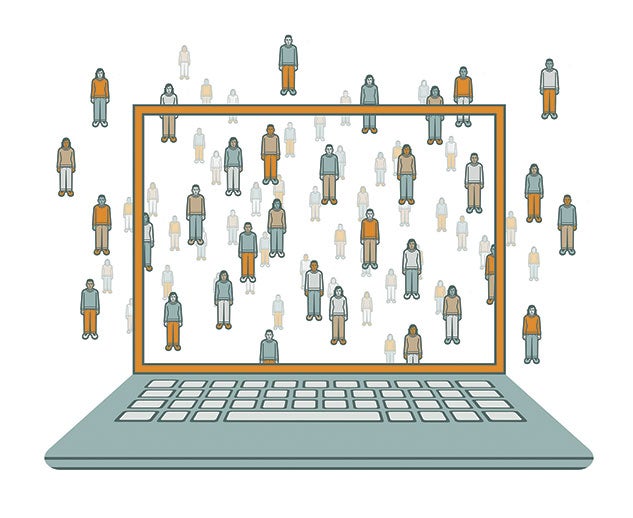
Admissions, Virtually
Online outreach reaches new and potential students.
One of the most significant changes to my work and that of the Office of Admission was having to reimagine our contact with students, both in terms of recruitment and admitted student activities. To meet this challenge, our office created a suite of virtual programming.
Our fall program for underrepresented students, Seeking Opportunities at Rice (SOAR), was offered online with panels on the student experience, support for diverse students and a spotlight on Houston resources, among other topics. This virtual approach enabled us to reach over 500 students versus the 175 or so that we are usually able to host on campus. The geographic representation of the students was more extensive than we have ever been able to reach through travel alone.
Thinking about what students needed from us in terms of Rice information and support in the application process coupled with creative approaches led to innovative programming throughout the year and specialized content on our website. Not traveling gave us the time for more contact with schools and students through presentations and correspondence.
While these efforts were incredibly successful in bringing in an exceptional class of students who will start in August, the ability to connect in person with students, families and counseling colleagues is too important to not resume doing so as the ability to do so safely becomes more of a reality. Nothing will ever match the impact of seeing the Rice campus and the city of Houston firsthand and interacting with our community. I look forward to hitting the road again and welcoming students and families back to campus, but I also look forward to continuing to plan virtual experiences to introduce Rice opportunities to as many people as possible. — Tamara Siler ’87, deputy director of admission, access and inclusion
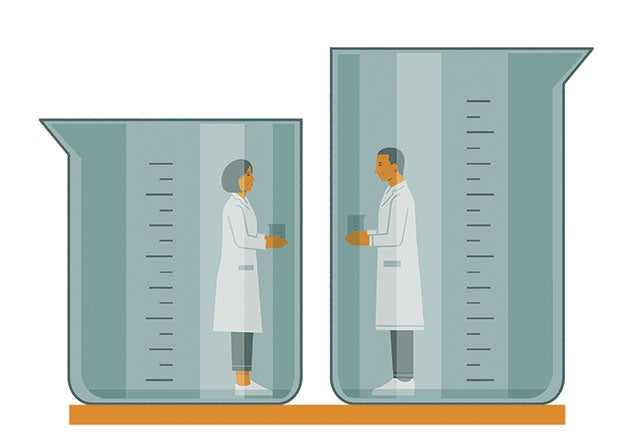 Leaps of Faith
Leaps of Faith
Experimental research was difficult to reproduce.
Running research groups was challenging. We tried our best, but I worry about the experiences that undergraduate and graduate students missed. I run an experimental lab, so when undergraduates choose to work in my group, they expect to learn experimental techniques — they want to learn about lasers, vacuum systems and electronics. I had one student come on board in February 2020, and we developed plans for summer research leading to a senior thesis. Then by March 2020, we had to change everything. Undergrads went home, and instead of coming into the lab, we had to find a computational project. We did the best we could, but it was a very different experience. When labs opened up to undergraduates again this spring, the student was able to get a little experience in the lab, but it was far less than typical, and I know that wasn’t unique.
Even though graduate students were able to get back into the labs relatively early during the pandemic, students were more isolated, or at best, they worked in smaller groups. They staggered their schedules in the lab to keep occupancy down. When I stopped by, instead of seeing lots of interaction and teamwork, there would be one person at a time sitting at the computer running the experiment. The communal aspect, which is great for learning and morale, was missing. We really wanted to keep people safe, so in the beginning students just disappeared into their homes, analyzed data, did more computer simulations, and wrote papers and theses. Those are important things, but for experimentalists, it’s not normal to be so isolated. We tend to work more in groups. It is great to see lab activity back to normal now, but for the first six months, it was gloomy.
The most amazing thing for me was how much of a leap of faith we all made when the pandemic started. At times it felt like were leaping into the abyss, but we made it work. One thing to learn from this is that we should never be afraid of challenges. — Thomas Killian, dean of the Wiess School of Natural Sciences, professor of physics and astronomy
The pandemic radically warped the space-time of academic life. Teaching and service went from in person to online overnight. … The only dimension that remained essentially untouched was the steady deluge of work-related email. Email is clearly the cockroach that will survive us all.”
— Dominic Boyer, professor of anthropology
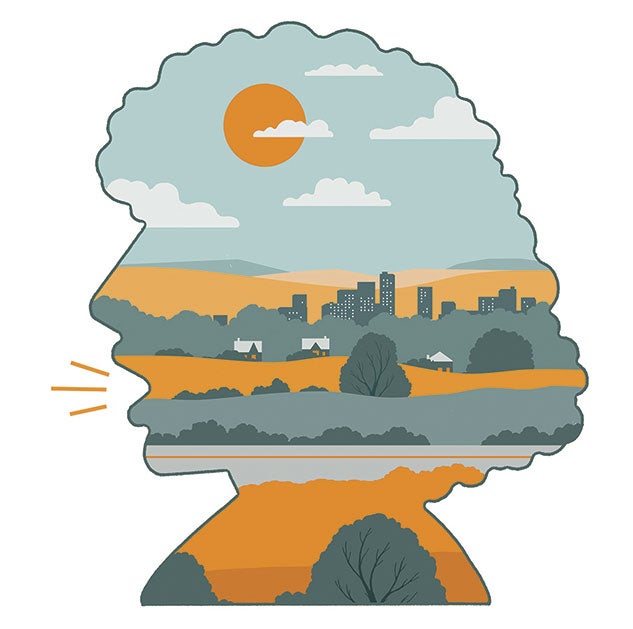 Finding a Way
Finding a Way
Civic engagement continued, creatively.
We were all sent into our homes, told to keep away from each other, stay apart, shut down. In the process, we learned to connect in new ways, check in on each other, take care of each other. We did not shut down.
My work is in experiential and civic education, community engagement and social justice. At first glance, shelter-in-place orders, masks and social distancing would seem like barriers to engagement. We found resources for students to access connections and to turn their attention to the work of collective action and mobilization in their communities. There were phone banks and email campaigns to register voters and encourage families to fill out the census, and there were mutual aid networks to get vulnerable and isolated community members what they needed: groceries, medical supplies, books, puzzles and cards.
We guided students through reflective activities centered on the concept of critical hope and transformational thinking. We asked students to recognize the injustices revealed in the losses and to double down on their commitments to realizing more equitable, inclusive societies — to push for that justice, to find the power of their voices and recognize how many more avenues of access arise and voices can be heard in places they haven’t been in the past. Our work always gives us hope in the dark and lifts us up. — Danika Brown, director of curriculum and fellowships, Center for Civic Leadership
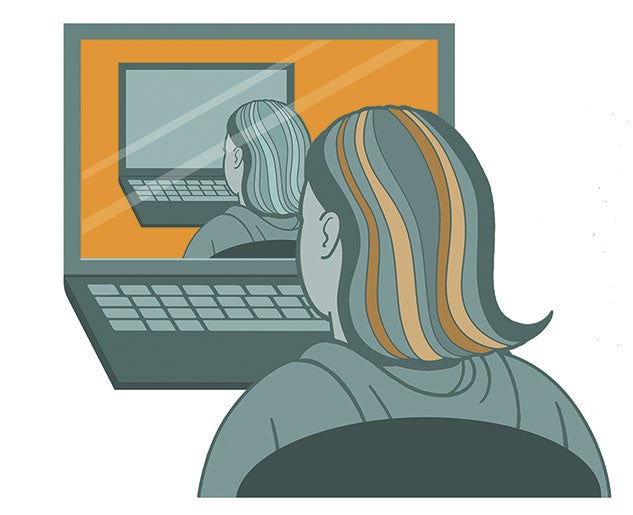 Going Meta
Going Meta
For some MBA students, the pandemic became both the context and the lesson.
I had about a 48-hour notice back in March 2020 to move my class online. That was a very intense introduction to remote teaching. When I had more time to prepare for online classes, my objective was to not just pick the content that I would teach in a classroom and put it online, but to redesign the whole experience.
For our MBA students, being suddenly online was the same environment for their work. Their teams were all virtual, and they had the same type of challenges we had as teachers, like participating in and leading meetings. I wanted to take advantage of the fact that everyone was visible in front of the camera. You see what their body language looks like, for example, and record their behaviors and words for debriefing.
I redesigned my leadership class [MGMT 710: Leadership Intensive Learning Experience] around a fully remote format, taking full advantage of the technologies. It’s a simulation-based class, where classes are set up in teams of five or six students who play against each other — role-playing running a medium-sized business. We created scenarios that incorporated a pandemic, where there’s uncertainty about research and development, marketing and pricing, not to mention a pandemic drop in demand for products.
I tried to bring these types of scenarios that were consonant with what was happening in the real world into the classroom. I think there will still be a place in the future for new technologies and to think about how we adapt our modalities of teaching. — Scott Sonenshein, Henry Gardiner Symonds Professor of Management, Jones Graduate School of Business

Locked In, Locked Out
International students and staff weather the storm.
For Adria Baker, executive director of the Office of International Students and Scholars, the pandemic wreaked “a year of frustration and hardship” for Rice’s international students. The impact of the global pandemic on international travel is not over.
Overall, how has your work on behalf of international students been affected by the pandemic?
The nature of travel, mobility, visa processing and immigration laws — the core areas of the international education profession — will be impacted for a very long time as a result of the pandemic. Guidelines affecting when, how and where one can travel are in constant flux. For example: Can you travel to or from the U.K., France, China, Brazil or Kenya today? Two weeks ago, perhaps you could not. Today, you may be able to — depending upon the travel restrictions, any recent surge in COVID-19 cases, current testing capabilities, as well as embassy and consulate openings or closing for visa processing and more. The paradigm shifts on a regular basis, which affects individuals in different ways.
We have also tried to communicate more regularly — and with a deeply empathetic lens with the Rice international population and the academic departments in order to help them navigate the ever-changing landscape.
Are new as well as returning students bearing the brunt of this flux?
We have newly admitted graduate and undergraduate students who have been trying to get a visa to enter the U.S. since before August 2020 and have not been able to do so. Many of our continuing students returned home when Rice began teaching remotely in March 2020 and have been studying from abroad ever since, as a result of not being able to get a visa to reenter the U.S. In essence, each international student’s case is individual and unique to many changing variables.
The financial and emotional strain on international students who come to the U.S., as well as their being isolated due to remote classes, further complicated their learning about cultural mores and meeting new friends. While these young students and scholars are resilient, it has taken a heavy toll.
How has your office responded to challenges like these?
We implemented online fall orientations and trainings in a continuum over the summer months, not just upon arrival in August. Our international advising meetings are either on Zoom or in a courtyard outside of our building. We held an outdoor networking lunch series with many of our individual population groups, such as newly arrived internationals in the spring 2021 semester, postdocs, graduate students and exchange visitors. We have conducted online immigration trainings and meetings and held online cultural and educational programming, such as talent shows, competitions, an international education fair and virtual tours by Rice’s international population. We have also tried to communicate more regularly — and with a deeply empathetic lens — with the Rice international population and the academic departments in order to help them navigate the ever-changing landscape.
Which of these changes will stick around in the post-pandemic environment?
The continuum of online international orientations throughout the weeks before arrival should and will continue. We will try to continue some of our outside picnic lunch series, too. Visa processing and international mobility [to and from the U.S.] may be forever changed — as they are still changing. It remains to be seen where and when the ever-evolving pivots will slow. I do not anticipate a constant in these areas in the near future.
Possible Futures
What are the changes that we found useful? What lessons should we take to heart?
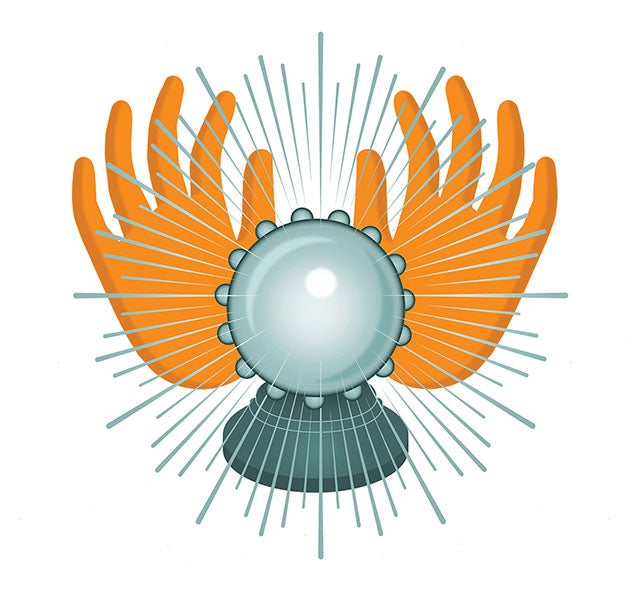
Three Predictions
Pandemic-era changes that may last
The academic teleconference is here to stay. I see a lot of academic business meetings and small-scale academic events continuing online for the foreseeable future. Zoom meetings are convenient, inexpensive and flexible. One of the small silver linings to the pandemic has been the acceptance of teleconferences as a new standard for international conferencing — a huge savings of time, carbon emissions, and human wear and tear.
The use of campus space will change. For those of us who don’t need to be on campus to do research, many will continue working from home. Owner-occupied academic offices are dinosaurs of the predigital era. I see a rise in flexible work and gathering spaces, like the Brochstein Pavilion, where it seems like 90% of Rice’s business takes place anyway.
Not all the legacies of the pandemic will be positive. The one that disturbs me the most is how many academic administrations have used the financial stress of the pandemic to discontinue programs and tenure-track lines. Short-term crisis decisions can have long-term consequences. During the 2008 economic crisis, my field — anthropology — saw its job market shrink by roughly 25% without a postcrisis recovery. I worry very much that the return to normal will bring even greater structural precarity, especially in those fields that are not deemed strategic priorities. — Dominic Boyer, professor of anthropology
A Course Correction for Children’s Health
The pandemic worsened preexisting inequities in access to opportunities for children and their families. Yet, there is now a societal will and resources to address the systemic factors that perpetuate inequity. Our work pivoted during the pandemic to investigate the widening disparities in early childhood development and to offer evidence-based recommendations to local, state and national policymakers on solutions to improve outcomes for vulnerable children and their families. The pandemic highlighted many of the inequities in our country in a way that made it difficult to continue to ignore them, and I sense a momentum in this country to course-correct. — Quianta Moore, Huffington Fellow in Child Health Policy at the Baker Institute’s Center for Health and Biosciences
Highlighting Essential Workers
We’ve seen cities function very differently in the pandemic: People working from home and spending more time outdoors, the disappearance of rush hour as well as business travel and tourism, higher unemployment rates, and the shifting of many services online. Public health is suddenly in the forefront. It’s been a time of tremendous uncertainty about the future and one that showed us underlying truths. The pandemic highlighted the essential workers who have to go to work to keep our cities running — nurses, grocery store clerks, bus operators — those we’ve often ignored in planning our cities and those who’ve highlighted our inequities. I hope we all remember those lessons. — Christof Spieler ’97, senior lecturer, Rice Architecture
Learning Where Online Instruction Works … and Doesn’t
Compared to many U.S. universities, Rice faculty had not ventured too deeply into the pool of online education prior to the pandemic. We all were thrown into the deep end. I learned to appreciate some benefits of online instruction, in particular the ability for students to attend class if traveling or unable to make it to campus. For me, online classes with more than a dozen students are suboptimal, but online classes with fewer students work quite well. In the Master of Global Affairs program, we will be returning to fully in-person classes beginning in the fall but are looking into retaining the dual-delivery mode as an emergency option. — Mark Jones, Joseph D. Jamail Chair in Latin American Studies, faculty director of the Master of Global Studies
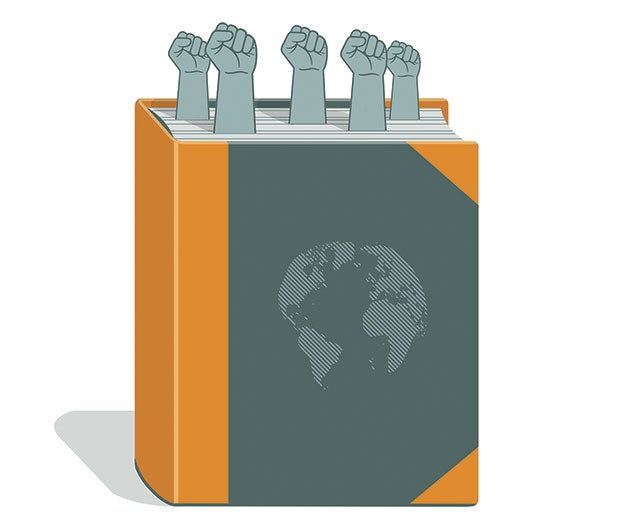 The Earth Breathes
The Earth Breathes
Unexpectedly, the pandemic renewed climate activism.
The pandemic highlighted for every person the fact that we exist in a highly interconnected system and that denial of global problems like pandemics and the climate crisis is reckless. The rising global social movement for climate action has converged with a global technological revolution. We now have viable solutions for emissions reductions across most sectors of our economy, and we’re increasingly acting on them. For example, 90% of the generating capacity added to electricity grids across the entire planet in 2020 was from a renewable generating source. That’s stunning, and that’s what this revolution looks like. The last four months of 2020 were particularly breathtaking. Some of the largest companies and economies in the world made dramatic climate action pledges. We’re seeing bold steps, not incrementalism. The questions at the leading edge have fundamentally changed from “How do we reduce our impact?” to “How can we undo our historical negative impacts?” Further, the pandemic has more tightly connected environmental action with human health and justice. When we see that historically disenfranchised communities suffer environmental and public health impacts disproportionately, it highlights how combating racism and empowering the disenfranchised is critical to solving our climate crisis.
At the dawn of 2020, I dared not dream so much change could happen in such a short period of time. A year later, I was telling audiences in virtual talks that we are now in an era of profound change, and the change is getting faster and faster. The world is going to look very different in 2030. Students who graduate with a high level of environmental literacy will find opportunity in shaping this new world, like those with computer skills who graduated in the mid-1990s and were immediately swept into creating the digital economy. There’s before 2020, and there’s after 2020. Buckle up: there’s no going back. — Richard Johnson ’92, executive director for sustainability, Administrative Center for Sustainability and Energy Management

Pharmacy's Front Line
As a resident at the University of Texas Southwestern Medical Center in Dallas and then a clinical staff pharmacist, I spent the last year making sure hospitalized patients received critical drug treatment for COVID-19.
I was in my final few months as a pharmacy resident at UT Southwestern Medical Center when we started to hear about the coronavirus. At first, we were told not to wear masks because we needed to save them for when we started receiving COVID-19 patients. Initially, things didn’t change that much except that in-person meetings were restricted to five or fewer people. All elective procedures were canceled and the hospital census plummeted. All departments were instructed to keep a minimal number of staff on-site to keep the hospital running. Some of the pharmacists were told to work from home, but as a resident I was expected to be in the hospital.
Starting in April, the hospital began handing out surgical masks to every employee every day. N95 masks were restricted to COVID-19 units and the emergency room. At the end of each day, employees would place their masks in plastic bags and write their name, employee number and department on the bag. The plan was to sterilize and reuse the masks if the hospital ran out. All employees had their temperatures checked every day and had to certify that they had no COVID-19 symptoms. I finished my residency in June and was hired on as a clinical staff pharmacist in July.
In the beginning, we really didn’t know how to treat the virus, and the hospital planned to have a separate team treating COVID-19 patients in a different area of the hospital. About a month into the pandemic, that changed when they started expanding who could work on the COVID-19 unit. There was a dedicated team of nurses and doctors who had gone through special training on how to treat those patients. But if there was an emergency and they needed to do CPR because someone’s heart stopped, we were expected to respond just as we normally would.
We had a ‘crash cart’ with all the necessary medications so we could respond to an emergency code. Those emergencies can be very crazy and hectic, so we would offer assistance preparing any medications that were needed.
Pharmacists play a really important role in treating the virus. We review every drug order as it comes in. If the dose is wrong, or if you realize it’s the wrong drug, you talk to the provider and say, “Hey, I think this might be what you meant.” For COVID-19, we were reviewing the orders to make sure they were appropriate based on what we knew at the time. We had a “crash cart” with all the necessary medications so we could respond to an emergency code. Those emergencies can be very crazy and hectic, so we would offer assistance preparing any medications that were needed.
We had to deal with a number of challenges. To limit the number of times nurses had to go in and out of the patients’ rooms, the hospital moved the IV poles outside the patients’ rooms. But that meant extending the IV tubing by about 10 feet, which increased the volume of IV drugs needed to reach the patient. Because there were shortages of those drugs, we only had a limited amount allocated to our hospital. Fortunately, one of our ICU pharmacy specialists was able to find microbore tubing, which is very long and thin. It was kind of like an extension cord, and it cut down on the amount of medicine we had to use.
We were responsible for making all the IV medications, such as remdesivir, that were being used. We had to compound a lot of those drugs ourselves, which meant making multiple batches of paralytics and vasopressors [which are used to increase blood pressure] every day. The other major issue was how quickly treatment recommendations changed early in the pandemic. As pharmacists, we were expected to know all the inclusion criteria for each drug, as well as dosage adjustments for different disease states, and communicate that information to the prescribing provider.
Things are slowly getting back to normal. Most of the hospital staff have now been vaccinated. We still wear masks, but no one is working remotely anymore. Patients are allowed a limited number of visitors again. Our inpatient COVID-19 numbers are the lowest they’ve been since the early fall. As long as people keep getting vaccinated and acting responsibly, I think we have things under control. — As told to Michael Hardy ’06
What Mattered
The dynamic of classroom conversation, the value of presence, informal chit-chat with co-workers and the "necessity" of the office commute and who could work safely — divisions and values were brought into sharp relief.
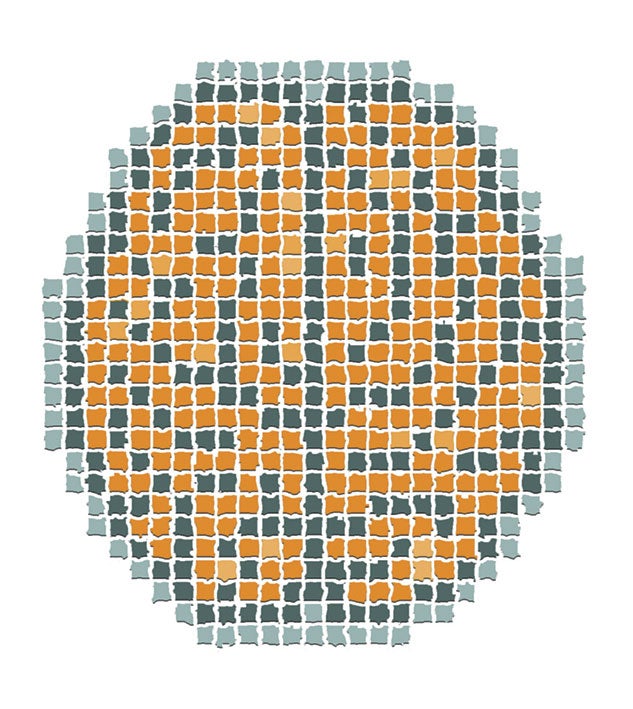 A Collective Intelligence
A Collective Intelligence
More than anything else, this experience has taught us the value of presence. For me, the pandemic really reaffirmed a lot of what I already knew — I knew how much I loved my work and how much I cherished and valued my time in this community, engaging with people. And so, the very prospect of being able to come back to the classroom in person is incredibly joyful. I’m relieved and delighted that we’re going to get back to something much more closely resembling normal. That’s the hope for everybody.
When we’re in the classroom, I think there’s a quality to the dynamic of learning and conversation that can happen — people learn to be in one another’s presence. They learn to listen to one another. And it’s beyond respectful. Something like a collective or composite intelligence emerges. We end up, as a group, being far stronger. And what comes out is far more valuable than anything any one of us could have come up with on our own, myself included. And that really is almost impossible to emulate when teaching remotely. — Marcia Brennan, Carolyn and Fred McManis Professor of Humanities, professor of religion and art history
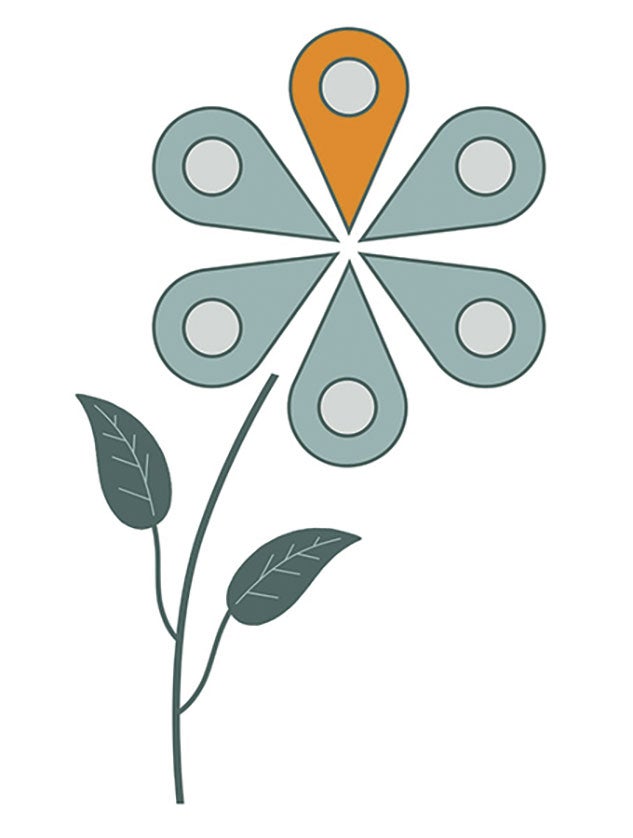 The Fundamental Importance of Being Fully Present
The Fundamental Importance of Being Fully Present
The pandemic has been a ruthless, even brutal, learning experience. It shocked our understanding of almost every aspect of our lives: social networks, institutions, relationships, values. Very quickly, we were able to see what mattered the most for us as professors and researchers — but more importantly, as people. A classroom without bodies, faces without smiles or frowns, salutations without hugs or kisses — these revealed the fundamental importance of “being fully present.” We need to connect with others beyond the sharing of information. We need each other. We need each other “here,” fully embodied. These ideas not only impacted my own views of teaching, the production and dissemination of knowledge, but also of family and friendship. Within this global crisis, I also acknowledged the urgency of humanities. I mean that I feel the urgency of engaging critically with life, with the place of people and communities in the making of — or destruction of — our world. — Angela and Luis
Duno-Gottberg, Baker College magisters
Online teaching was surprisingly humanizing. We all caught glimpses of each other’s lives, as we taught from kitchen tables with small children and pets regularly in attendance, invited or not.”
— Lisa Balabanlilar, professor of history, chair of Transnational Asian Studies
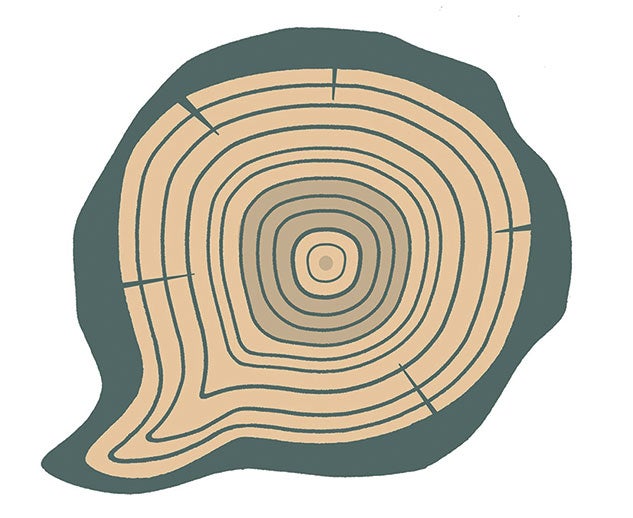 Missing Chit-Chat
Missing Chit-Chat
The loss of in-person teaching hanged the nature of my interactions with students, research teams and school district partners. One of the biggest changes was the loss of most of the informal hallway conversations about weekends, children, pets and other information — office conversations that turned out to be much more important than I thought. We tried to recoup these informal exchanges by creating a “water cooler” Zoom channel. Zoom chats and meetings should continue, but they shouldn’t replace in-person meetings, classes, social events and those surprisingly important water cooler conversations. — Ruth López Turley, professor of sociology, director of the Houston Education Research Consortium
Rethinking the Idea of Cities
The pandemic and the rise of remote work called into question the entire idea of cities. Remote work has made everybody rethink the need for commuting and going to the office. Home delivery has accelerated the decline of bricks-and-mortar retail stores. The divisions in our society have been highlighted, as some people can safely work at home while others have had to put themselves at risk to go to work. All this has fundamentally changed the assumptions underlying our work — that city life constitutes a daily pattern of commuting, work and shopping — and exacerbated the inequity in cities that we already saw. — William Fulton, director of the Kinder Institute for Urban Research
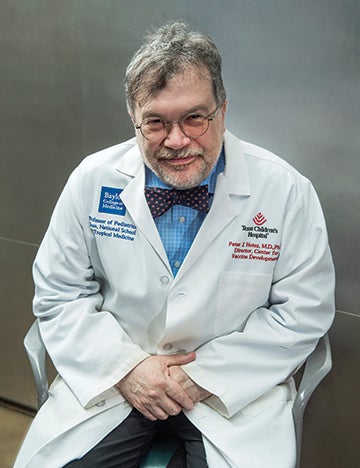
Speaking for Science
Peter Hotez reflects on public health advocacy and the urgent need to increase vaccine production and access.
Physician and research scientist Peter Hotez has been a loud and trusted international voice during the COVID-19 pandemic, pulling from his decades of expertise in vaccine development and neglected tropical diseases. Currently, Hotez holds a variety of critical roles, including Baker Institute for Public Policy fellow in disease and poverty, dean of the National School of Tropical Medicine, professor of pediatrics and molecular virology and microbiology at Baylor College of Medicine (BCM) and co-director of the Texas Children’s Hospital Center for Vaccine Development.
Before the pandemic, Hotez and his colleagues were working on a vaccine for SARS-1, a coronavirus closely related to the one that causes COVID-19. But, with China’s SARS-1 outbreak 10 years in the rearview mirror, federal funders chose not to support clinical trials. Now, in addition to his work creating new vaccines for rare parasitic and tropical diseases, Hotez and BCM colleague Maria Elena Bottazzi are co-directing a development effort in association with the Indian manufacturer Biological E Ltd. to bring a new COVID-19 vaccine to market.
In low- and middle-income countries, vaccine access has been a major problem. What can be done now to address it?
Probably less than 10% of the vaccine doses have gone to low- and middle-income countries. We anticipated a vaccine equity issue, but there wasn’t enough attention given to making vaccine supply available. We need all hands on deck to scale up production of vaccines for low- and middle-income countries. One of the things I’d like to see is for the Biden administration to help scale up production of other low-cost available vaccines. For instance, Biological E is making a billion doses of our vaccine. Could they step up and make 4–5 billion doses on top of that?
What types of new and better systems do we need in developing countries to avoid or mitigate future pandemics?
There’s enormous room to grow in terms of building capacity for vaccine production. Right now, no vaccines are made on the African continent, and very little are produced in Latin America or the Middle East. Currently, there are no real, concrete plans for that, but it has to be an area of priority.
What can we accomplish by convincing more people to get a COVID-19 vaccine?
Conservative groups are the most vaccine-resistant group in the United States. We have to figure out a way to reach out to them. Whenever possible, I go on conservative news outlets to stress the safety and efficacy of COVID-19 vaccines.
High rates of vaccine hesitancy in Black and Hispanic communities have improved. How?
The clergy have helped a lot, especially the pastors and leaders of the Black churches who have worked really hard on this. Now, we are seeing lower vaccine hesitancy. It’s not as good as we’d like it to be, but it’s much better.
A year into COVID-19, you published your book, “Preventing the Next Pandemic.” What are some takeaways?
That COVID-19 is not so much an extraordinary event. It’s the capstone event of the rise in the anti-science movement, but also other social forces like urbanization. These forces, in addition to war and political instability, are collapsing health systems to bring back vaccine-preventable diseases such as polio and measles. In some instances, climate change works with these same elements to prompt the emergence of vector-borne diseases such as leishmaniasis and malaria. The book looks at how these social and political determinants combine in interesting ways to create various hot spot areas.
How might Rice contribute to the world handling future pandemics better?
One of the ways Rice could shine is to create a pandemic institute to look at some of these social and political forces in a more interesting way. There’s an opportunity to do something really substantial outside of areas like microbiology and biochemistry. The reason why over half a million Americans died of COVID-19 was only partly due to SARS-CoV-2. The other part was the defiance. The defiance of masks and social distancing and vaccines, and how we’ve allowed anti-science to morph from a fringe group into an empire. All of those things really need to be looked at in a more in-depth way.
